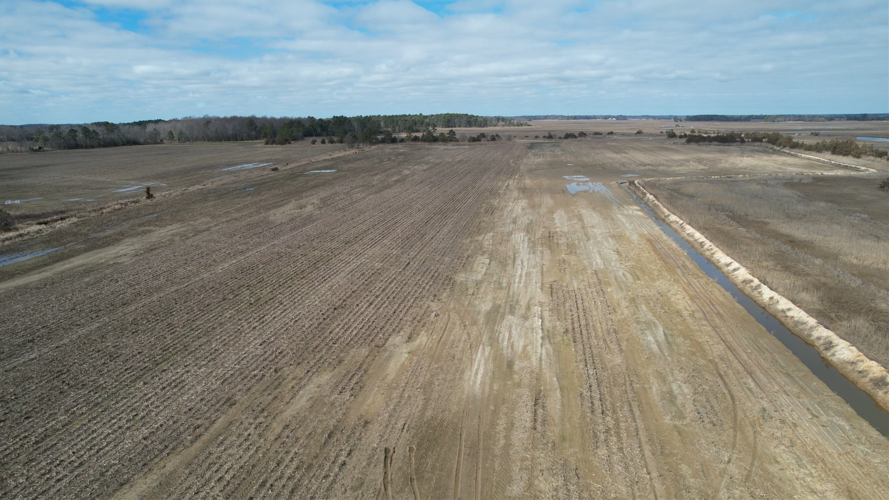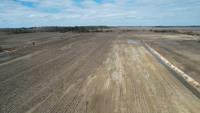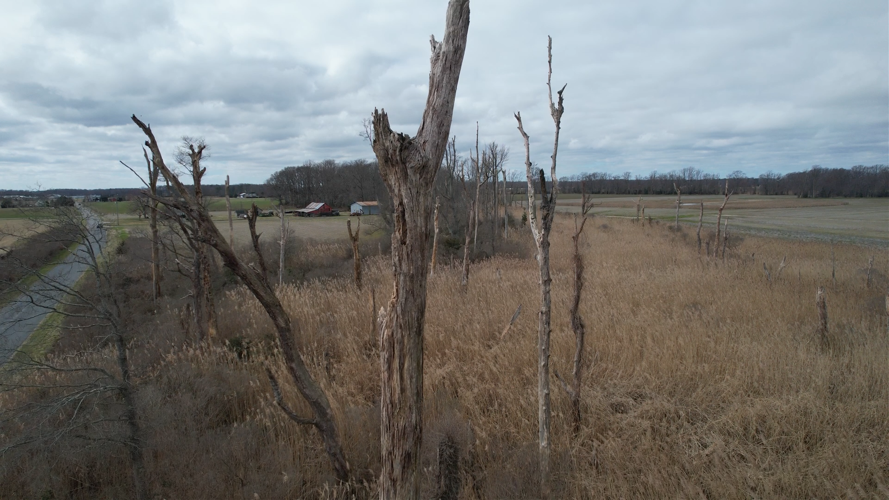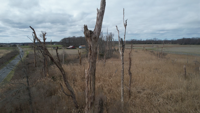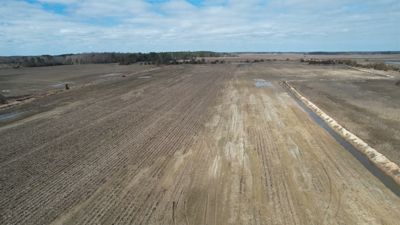MILFORD, Del. - Saltwater intrusion is becoming a growing problem around the world as the warming climate causes sea levels to rise. Here along the Delmarva Peninsula, sea levels are rising at some of the fastest rates compared to anywhere else in the world because of a combination of rising seas and sinking land. In Lewes, sea levels have risen over 10 inches since 1950.

Sea levels have risen around 10 inches in Lewes since 1950.
Saltwater intrusion occurs when saltwater moves into the fresh groundwater. This increase in salinity completely changes the soil composition of the land overtop and it can have major impacts on what is able to grow in this area. In the worst case this can result in a total loss of farmland along the coast as only plants adapted to salty soils can grow. Marshland eventually migrates into this area as the water levels continue to rise.
A new study by researchers from the University of Delaware, University of Maryland, and George Washington University found a significant rise in saltwater intrusion on Delmarva farmland that resulted in over 20,000 acres of farmland being converted to marsh between the years 2011-2017. This study estimated that economic losses on Delmarva range between $40-100 million annually.
“Depending on the salinity level, crops might not die entirely, but it will be resulting in a reduced health giving you reduced yield which means reduced profit”, explained Dr. Pinki Mondal, a lead researcher on saltwater intrusion.
Using the Salt Patch mapper from this research, we found that no counties on Delmarva have escaped the impacts of saltwater intrusion as higher salinity water has traveled farther up rivers, bays, and estuaries and invaded groundwater supplies. The worst impacts were seen near farms in Maryland and Virginia along the Chesapeake Bay, but Delaware had its own hotspots along the Delaware Bay and the inland bays.

A major dune breach on Fowler Beach in the late 2000s and early 2010s resulted in significant flooding of freshwater marshes.
One area of Delaware that was noticeably more impacted was the farmland outside of Prime Hook National Wildlife Refuge. In this area, the saltwater intrusion problem is suspected to have been worsened by a series of dune breaches along Fowler Beach in the late 2000s and early 2010s caused by nor’easters along with storms like Hurricane Irene and Superstorm Sandy. The dune breaches allowed saltwater to flood into freshwater ponds and marshes near Prime Hook. According to DNREC, the rush of saltwater into these areas resulted in many freshwater wetland plants and trees dying. This also had a major impact on the adjacent farmlands.

Dozens of trees died as saltwater flooded their root systems following the dune breach at Fowler Beach.
Numerous farmers along the stretch of farmland neighboring Prime Hook National Wildlife Refuge confirmed that they are experiencing the impacts of saltwater intrusion on their operations.

Mark Wells owns nearly 1500 acres of farmland near Prime Hook National Wildlife Refuge.
Mark Wells, a 9th generation farmer, who tends to land adjacent to the Prime Hook National Wildlife Refuge has been particularly hard hit. His farm has had as much as 11-12% of its acreage impacted by saltwater intrusion. Over 20 acres of Wells’ land has gotten to the point where it won’t produce a crop. In this area, you will find invasive phragmites growing alongside corn stalks that won’t actually produce any corn.

Invasive Phragmites invade a corn field as the soil turns salty from saltwater intrusion.
“When you see parts of your farm disappear due to saltwater intrusion which you have no control over stopping, you know it hurts.” Wells explained.
Wells has taken multiple steps to help mitigate the impacts of the saltwater intrusion on his farmland. One of those steps is rotating the crops he grows to more salt tolerant plants, like sorghum. The areas of his farm that won’t produce a crop, he is adding organic material to, which he hopes will return the soil to its previous state. This process will likely take decades to complete and that is if no more flooding occurs. A final step Wells has taken is building a berm to protect his lowest lying field from floodwaters that could surge onto his land from the marshes of the wildlife refuge.
The USDA has other suggestions for these particularly hard hit areas. One suggestion is to grow grasses that are salt tolerant which could then be used as mulch or animal bedding.
In Marks instance, the steps he has taken may help save his farmland since many of his issues arose due to the major breach which has since been fixed. In other instances, no matter what steps are taken, the land will inevitably be lost as the marsh takes over due to the rising seas.
Sea levels are expected to continue to rise through this century. Current estimates forecast sea levels to potentially rise as much as two additional feet through 2100. This means that the problem of saltwater intrusion will not be going away anytime soon.





